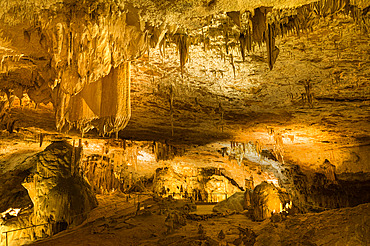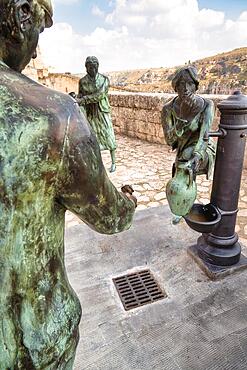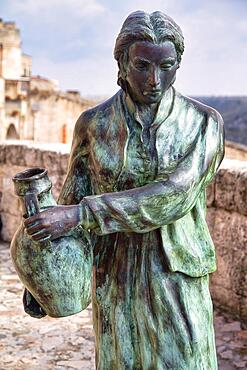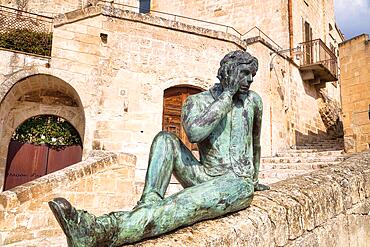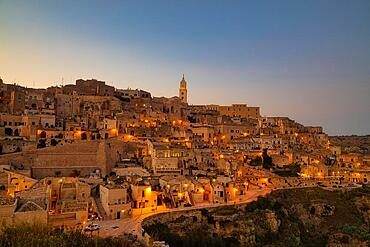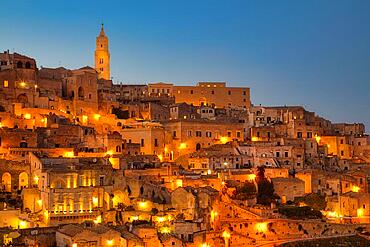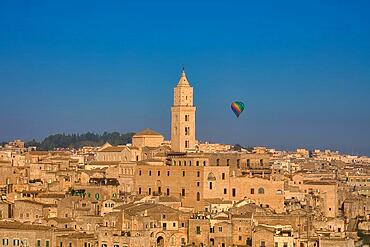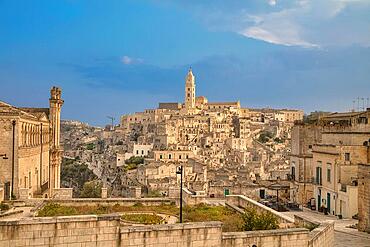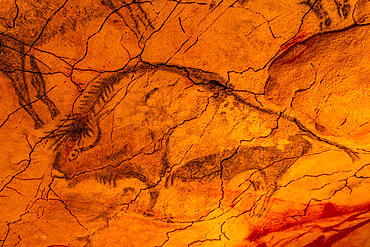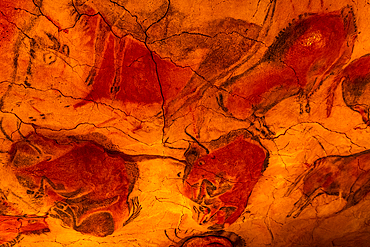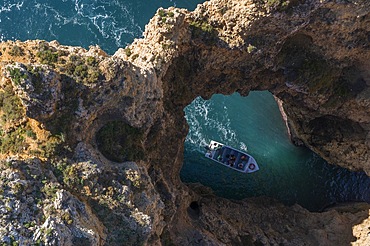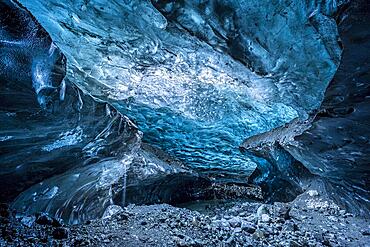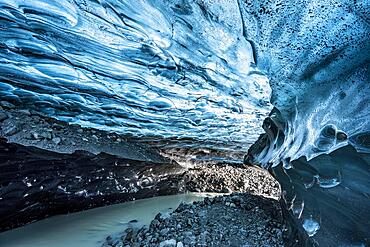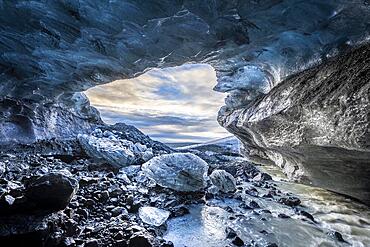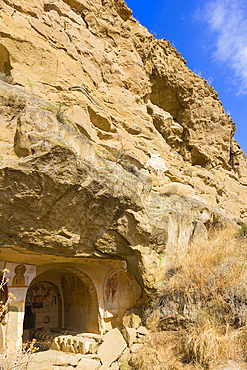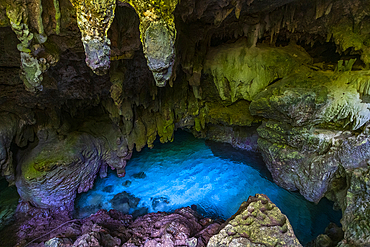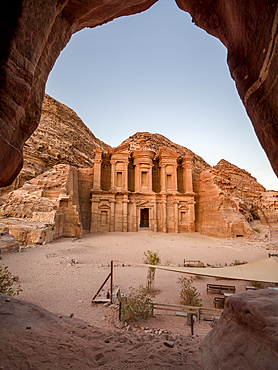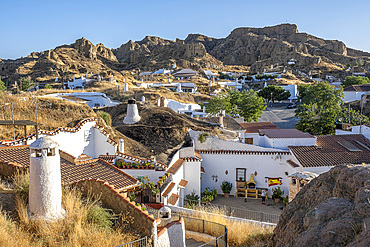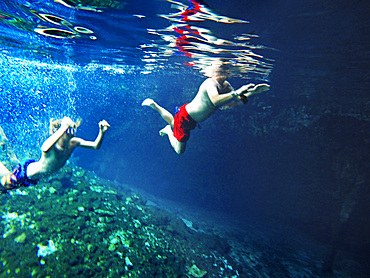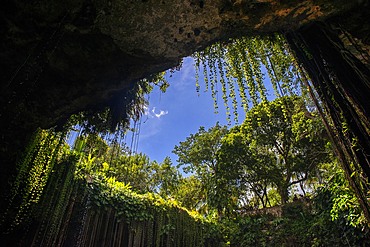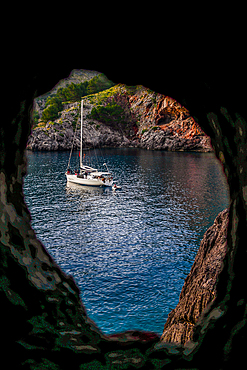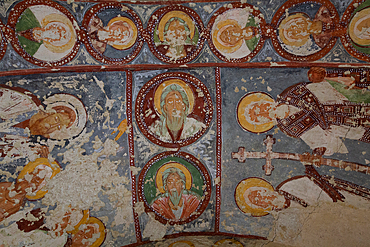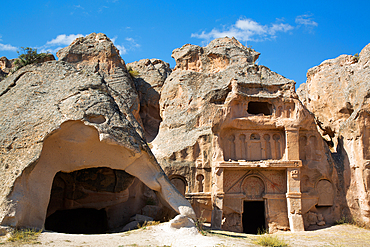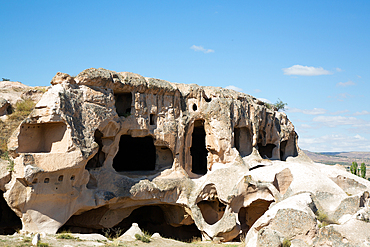Recent searches
Loading...
860-291726 - Interior view of the Grotte des Moidons, Molain, Jura, France
860-291725 - Interior view of the Grotte des Moidons, Molain, Jura, France
860-291724 - Interior view of the Grotte des Moidons, Molain, Jura, France
860-291723 - Interior view of the Grotte des Moidons, Molain, Jura, France
860-291627 - Diver at the bottom of an underwater cave 75 metres deep and which has been flooded for thousands of years (- 20 000 years). Mayotte
860-291626 - Diver at the bottom of an underwater cave 75 metres deep and which has been flooded for thousands of years (- 20 000 years). Mayotte
860-291625 - Grey reef shark (Carcharhinus amblyrhynchos) in a cave at a depth of 60 metres. Mayotte
832-401119 - Entrance to a cave, Gutenberg Cave, Swabian Alb, village of Gutenberg, district of the municipality of Lenningen, Baden-Wuerttemberg, Germany, Europe
832-400260 - Bronze figures in Matera, Matera province, Basilicata, Italy, Matera, Basilicata, Italy, Europe
832-400259 - Bronze figure in Matera, Matera Province, Basilicata, Italy, Matera, Basilicata, Italy, Europe
832-400258 - Bronze figure in Matera, Matera Province, Basilicata, Italy, Matera, Basilicata, Italy, Europe
832-400257 - Bronze figure in Matera, Matera Province, Basilicata, Italy, Matera, Basilicata, Italy, Europe
832-400253 - City view, Matera at night, Matera province, Basilicata, Italy, Matera, Basilicata, Italy, Europe
832-400254 - City view, Matera at night, Matera province, Basilicata, Italy, Matera, Basilicata, Italy, Europe
832-400251 - Cityscape, Matera, Province of Matera, Basilicata, Italy, Matera, Basilicata, Italy, Europe
832-400249 - Cityscape, Matera, Province of Matera, Basilicata, Italy, Matera, Basilicata, Italy, Europe
832-400250 - City view, Matera at night, Matera province, Basilicata, Italy, Matera, Basilicata, Italy, Europe
1184-8540 - Cave dwellings, Garphu, Kingdom of Mustang, Himalayas, Nepal, Asia
1184-8533 - Cave dwellings, Garphu, Kingdom of Mustang, Himalayas, Nepal, Asia
1184-8313 - Altamira Cave, UNESCO World Heritage Site, Cantabria, Spain, Europe
1184-8312 - Altamira Cave, UNESCO World Heritage Site, Cantabria, Spain, Europe
1184-8311 - Altamira Cave, UNESCO World Heritage Site, Cantabria, Spain, Europe
1184-8309 - Altamira Cave, UNESCO World Heritage Site, Cantabria, Spain, Europe
1184-8310 - Altamira Cave, UNESCO World Heritage Site, Cantabria, Spain, Europe
1184-8308 - Altamira Cave, UNESCO World Heritage Site, Cantabria, Spain, Europe
1184-8307 - Altamira Cave, UNESCO World Heritage Site, Cantabria, Spain, Europe
1184-8306 - Altamira Cave, UNESCO World Heritage Site, Cantabria, Spain, Europe
1184-8305 - Altamira Cave, UNESCO World Heritage Site, Cantabria, Spain, Europe
1311-629 - Caves in the cliff walls, used to store food by ancient Anasazi Indians, Canyon De Chelly National Monument, Arizona, United States of America, North America
832-400088 - Boat going into a cave at Praia da Marinha, rocks and cliffs, steep coast in the Algarve, Portugal, Europe
832-398632 - Ice cave in Vatnajoekull glacier, glacier cave, Vatnajoekull National Park, South Iceland, Iceland, Europe
832-398631 - Ice cave in Vatnajoekull glacier, glacier cave, Vatnajoekull National Park, South Iceland, Iceland, Europe
832-398630 - Ice cave in Vatnajoekull glacier, glacier cave, Vatnajoekull National Park, South Iceland, Iceland, Europe
1359-531 - Tourists exploring ancient cave city of Vardzia, Georgia, Central Asia, Asia
1359-532 - David Gareja Monastery complex, Sagarejo Municipality, Kakhetia, Georgia, Central Asia, Asia
1359-514 - Ancient cave city of Vardzia, Georgia, Central Asia, Asia
1184-8060 - Turquoise water in the Grotto, Christmas island, Australia, Indian Ocean
1359-483 - Exterior of Hpo Win Daung Caves (Phowintaung Caves), Monywa, Myanmar (Burma), Asia
1359-480 - Buddha statue, Hpo Win Daung Caves (Phowintaung Caves), Monywa, Myanmar (Burma), Asia
1359-479 - Reclining Buddha statue, Hpo Win Daung Caves (Phowintaung Caves), Monywa, Myanmar (Burma), Asia
1359-473 - Buddha statues, Hpo Win Daung Caves (Phowintaung Caves), Monywa, Myanmar (Burma), Asia
1359-469 - Buddha statues, Hpo Win Daung Caves (Phowintaung Caves), Monywa, Myanmar (Burma), Asia
1359-465 - Buddha statues, Hpo Win Daung Caves (Phowintaung Caves), Monywa, Myanmar (Burma), Asia
1359-463 - Entrances in Hpo Win Daung Caves (Phowintaung Caves), Monywa, Myanmar (Burma), Asia
1359-458 - Buddha statue, Hpo Win Daung Caves (Phowintaung Caves), Monywa, Myanmar (Burma), Asia
1359-451 - Buddha statues, Hpo Win Daung Caves (Phowintaung Caves), Monywa, Myanmar (Burma), Asia
1359-443 - Buddha statues, Hpo Win Daung Caves (Phowintaung Caves), Monywa, Myanmar (Burma), Asia
1359-440 - Temple exterior, Hpo Win Daung Caves (Phowintaung Caves), Monywa, Myanmar (Burma), Asia
1184-7985 - Santana Cave, Atlantic Forest South-East Reserves, UNESCO World Heritage Site, Alto Ribeira Touristic State Park, Sao Paulo State, Brazil, South America
1336-780 - Al Deir (Monastery) monument at sunset, carved into the mountain side and framed by a cave, Petra, UNESCO World Heritage Site, Jordan, Middle East
1350-6630 - Swimming at Cenote Ik Kil in Yucatan, Mexico, a natural pit, or sinkhole near Chichen Itza. Yucatan Peninsula, Quintana Roo, Mexico. Ik Kil was sacred to the Mayans who used this cenote for both relaxation and ritual services centuries ago.
1350-6633 - Gran Cenote de Tulum in Yucatan Peninsula, Quintana Roo, Mexico. There are thousands of cenotes dotted all over Mexico���s Yucatan Peninsula, and their existence is as much a defining characteristic of the region as is the distinct geological feature from which they result. Once revered by the ancient Mayans as sacred wells, they are now magnets for tourists, adventurers, and explorers alike.
1350-6628 - Cenote Ik Kil in Yucatan, Mexico, a natural pit, or sinkhole near Chichen Itza. Yucatan Peninsula, Quintana Roo, Mexico. Ik Kil was sacred to the Mayans who used this cenote for both relaxation and ritual services centuries ago.
1350-6670 - Replica of the grotto at the Lady of the Lourdes shrine in the Convent of the Concepcionistas. Viveiro, Lugo, Galicia, Spain, Europe
1350-6664 - Inside Basílica de Santa María la Real de Covadonga catholic church in Cangas de Onis, Picos de Europa, Asturias, Spain, Europe.
In 1777 a fire destroyed the old temple, which stood adjacent to the Holy Cave where Our Lady of Covadonga is revered. It was then decided to raise a new church as a monumental sanctuary, raising donations from all of Spain; the plan was opposed by the local council, as the canons wanted to rebuild the temple of the Holy Cave and build an ambitious sanctuary that had once been designed by Ventura Rodríguez, but never completed. One century later, the project was resumed by King Alfonso XII of Spain, who was interested in completing this work. The classic design of Ventura Rodríguez was very difficult and expensive and was replaced by a new neo-Medieval design.
1350-6663 - Our Lady of Covadonga. The Blessed Virgin Mary, and a Marian shrine devoted to her at Basílica de Santa María la Real de Covadonga catholic church in Cangas de Onis, Picos de Europa, Asturias, Spain, Europe.
In 1777 a fire destroyed the old temple, which stood adjacent to the Holy Cave where Our Lady of Covadonga is revered. It was then decided to raise a new church as a monumental sanctuary, raising donations from all of Spain; the plan was opposed by the local council, as the canons wanted to rebuild the temple of the Holy Cave and build an ambitious sanctuary that had once been designed by Ventura Rodríguez, but never completed. One century later, the project was resumed by King Alfonso XII of Spain, who was interested in completing this work. The classic design of Ventura Rodríguez was very difficult and expensive and was replaced by a new neo-Medieval design.
1350-6430 - A group of photographers in a photo workshop taking pictures at night in Monument Valley Navajo Tribal Park, Arizona.
1350-6577 - Sa Calobra Sailing boat at sunset in Torrent de Pareis, Mallorca, Spain
1336-760 - Caves carved in the stone of the mountain inside, Petra, UNESCO World Heritage Site, Jordan, Middle East
846-3164 - Grotta della Poesia (Poetry Cave) natural pool among karsk formations, Roca archaeological site, near Melendugno, Puglia, Italy, Europe
846-3159 - Grotta della Poesia (Poetry Cave) natural pool among karsk formations, Roca archaeological site, near Melendugno, Puglia, Italy, Europe
1359-235 - Buddha statues inside Kaw Ka Thaung Cave, Hpa-an, Myanmar
801-3214 - Cave Houses, Pigeon Valley, Goreme, Cappadocia Region, Nevsehir Province, Anatolia, Turkey, Asia Minor, Asia
801-3213 - Cave Houses, Pigeon Valley, Goreme, Cappadocia Region, Nevsehir Province, Anatolia, Turkey, Asia Minor, Asia
801-3217 - Cave Houses, Pigeon Valley, Goreme, Cappadocia Region, Nevsehir Province, Anatolia, Turkey, Asia Minor, Asia
801-3215 - Cave Houses, Pigeon Valley, Goreme, Cappadocia Region, Nevsehir Province, Anatolia, Turkey, Asia Minor, Asia
801-3216 - Cave Houses, Pigeon Valley, Goreme, Cappadocia Region, Nevsehir Province, Anatolia, Turkey, Asia Minor, Asia
801-3195 - Cave Houses, near Cavusin, Cappadocia Region, Nevsehir Provice, Anatolia, Turkey, Asia Minor, Asia
801-3196 - Cave Houses, near Cavusin, Cappadocia Region, Nevsehir Provice, Anatolia, Turkey, Asia Minor, Asia
801-3209 - Cave Houses, Pigeon Valley, Goreme, Cappadocia Region, Nevsehir Province, Anatolia, Turkey, Asia Minor, Asia
801-3206 - Cave Church, Pigeon Valley, Goreme, Cappadocia Region, Nevsehir Province, Anatolia, Turkey, Asia Minor, Asia
801-3210 - Cave Houses, Pigeon Valley, Goreme, Cappadocia Region, Nevsehir Province, Anatolia, Turkey, Asia Minor, Asia
801-3207 - Cave Houses, Pigeon Valley, Goreme, Cappadocia Region, Nevsehir Province, Anatolia, Turkey, Asia Minor, Asia
809-8588 - Huyen Khong cave, Marble Mountain, Sanctuary, Danang, Vietnam, Indochina, Southeast Asia, Asia
801-3204 - Cave Houses, Pigeon Valley, Goreme, Cappadocia Region, Nevsehir Province, Anatolia, Turkey, Asia Minor, Asia
801-3202 - Cave Houses, Pigeon Valley, Goreme, Cappadocia Region, Nevsehir Province, Anatolia, Turkey, Asia Minor, Asia
801-3198 - Cave Houses, Cavusin, UNESCO World Heritage Site, Cappadocia Region, Nevsehir Province, Anatolia, Turkey, Asia Minor, Asia
801-3211 - Cave Houses, Pigeon Valley, Goreme, Cappadocia Region, Nevsehir Province, Anatolia, Turkey, Asia Minor, Asia
801-3212 - Cave Houses, Pigeon Valley, Goreme, Cappadocia Region, Nevsehir Province, Anatolia, Turkey, Asia Minor, Asia
801-3208 - Cave Houses, Pigeon Valley, Goreme, Cappadocia Region, Nevsehir Province, Anatolia, Turkey, Asia Minor, Asia
809-8587 - Shakyamuni Buddha sitting statue, Huyen Khong cave, Marble Mountain, Sanctuary, Danang, Vietnam, Indochina, Southeast Asia, Asia
801-3194 - Al Nazar Church (Cave Church), 10th century, Goreme, UNESCO World Heritage Site, Nevsehir Merkez, Nevsehir, Anatolia, Turkey, Asia Minor, Asia
801-3199 - Cave Houses, Pigeon Valley, Goreme, Cappadocia Region, Nevsehir Province, Anatolia, Turkey, Asia Minor, Asia
801-3193 - Frescoes, Al Nazar Church (Cave Church), 10th century, UNESCO World Heritage Site, Goreme, Nevsehir Merkez, Nevsehir, Anatolia, Turkey, Asia Minor, Asia
801-3200 - Cave Houses, Pigeon Valley, Goreme, Cappadocia Region, Nevsehir Province, Anatolia, Turkey, Asia Minor, Asia
801-3197 - Cave Houses, near Cavusin, Cappadocia Region, Nevsehir Provice, Anatolia, Turkey, Asia Minor, Asia
801-3201 - Cave Houses, Pigeon Valley, Goreme, Cappadocia Region, Nevsehir Province, Anatolia, Turkey, Asia Minor, Asia
801-3178 - Acik Saray (Open Palace) Museum, AD 900- 1000, Gulsehir, Cappadocia Region, Anatolia, Turkey, Asia Minor, Asia
801-3181 - Acik Saray (Open Palace) Museum, AD 900- 1000, Gulsehir, Cappadocia Region, Anatolia, Turkey, Asia Minor, Asia
801-3179 - Acik Saray (Open Palace) Museum, AD 900- 1000, Gulsehir, Cappadocia Region, Anatolia, Turkey, Asia Minor, Asia
1184-7702 - Stalactites, Drach caves, Porto Christo, Mallorca, Balearic Islands, Spain, Mediterranean, Europe
1184-7704 - Drach caves, Porto Christo, Mallorca, Balearic Islands, Spain, Mediterranean, Europe
1184-7703 - Drach caves, Porto Christo, Mallorca, Balearic Islands, Spain, Mediterranean, Europe
1184-7701 - Drach caves, Porto Christo, Mallorca, Balearic Islands, Spain, Mediterranean, Europe
1184-7700 - Stalactites and stalagmites, Drach caves, Porto Christo, Mallorca, Balearic Islands, Spain, Mediterranean, Europe
1218-1628 - Sala de Uyuni Salt Flats Caves, Bolivia, South America
1184-7458 - A'eo Cave, Rurutu, Austral islands, French Polynesia, South Pacific, Pacific
